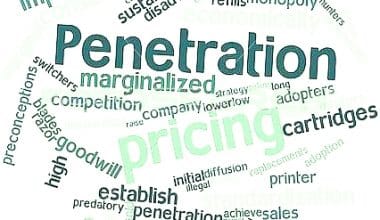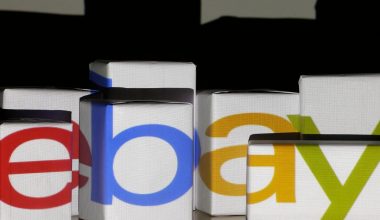A product line is a collection of related products sold under a single brand. Product lines are critical for businesses that want to provide customers with a diverse range of products to meet their needs. Consumers can branch out and try new products in the line as they become more familiar with the brand. In this article, we will discuss a marketing product line, explain how it works, and provide examples for reference.
What is a Product Line?
In marketing, a product line is a group of related products that are all marketed under a single brand name and sold by the same company. Companies sell multiple product lines under various brand names to differentiate them from one another for better consumer usability.
Companies frequently expand their offerings by adding to existing product lines because consumers are more likely to purchase products from brands with which they are already familiar. The product mix or product portfolio of a company is the combination of its product lines.
Product Line in Marketing Explanation
The concept centers on leveraging brand awareness and customer loyalty. People are typically drawn to products from brands they have previously used because they believe they can trust any new product from that brand. As a result, it is best to add a new product variant to an existing product line or brand.
Some of the larger companies have multiple product lines marketed under different brand names as a strategy to differentiate the products from one another so that the companies can easily target the requisite customer segment for each brand.
How Product Lines Work
Companies create product lines as a marketing strategy to capture the sales of consumers who already buy the brand. The operating principle is that consumers are more likely to respond positively to brands they know and love and will be willing to buy the new product based on their positive experiences with the brand in the past.
For example, a cosmetic company that already sells high-priced product lines of makeup (such as foundation, eyeliner, mascara, and lipstick) under one of its well-known brands may launch lower-priced product lines under the same brand name. Quality, price, and target market can vary across product lines. Companies use product lines to gauge trends, which helps them determine which markets to target.
The Evolution of Product Lines
Companies add new items to their product lines, a practice known as a product line extension, to introduce brands to new customers. Consumers who are not interested in a company’s sporting goods, for example, may be interested in its product line of energy bars or sports beverages. Companies can increase their reach by expanding their product lines.
The auto industry exemplifies how companies use product lines. Automakers are well-known for producing multiple product lines of vehicles to reach the broadest possible range of consumers.
As a result, they produce lines of economy vehicles, environmentally friendly vehicles, and luxury vehicles under their leading brands. Some are marketed to families, others to individuals, and still others to children.
What Are the Main Types of Product Lines?
While the product lines of a company will vary depending on the business segment or industry in which it operates, marketing and organizational scholars have identified four different classifications of a product line based on what is required to bring that line to market. These include:
- New to the world: A brand new invention or product, often the result of extensive research and development. These can be extremely risky, but also extremely rewarding if they succeed.
- New additions: These are new product lines added to a company’s product line that are not necessarily new to the world. As new competitors enter the market, these emerge.
- Product revision: The third category includes upgrades or replacements for current products. An iPhone X is a completely different product than an iPhone 4S.
- Reposition: Repositioning is the process of marketing an existing product to a new audience for a completely different use case.
Examples of a Product Line
Here are some examples to help you understand what a product line is and how it can benefit businesses:
#1. Great Hair Care Products
Great Hair Care Products sells a line of affordable shampoos and conditioners in convenience stores around the world. Aside from shampoos and conditioners, the brand recently added two new products: a hair dryer and a texturizer. Because these products are sold under the same brand, customers know they’ll be affordable and available in stores where they’d normally buy Great Hair Care Products shampoos and conditioners. Due to their familiarity with the brand, these customers may be more likely to purchase the new hair dryer or texturizer.
#2. Wise Tech Company
Wise Tech Company is a globally recognized brand that manufactures computers and smart technology. Every year around the same time, it releases a new smart product for its main product lines. Customers recognize the brand for high-quality hardware and software, so each new product release allows the company to increase its market share while also surprising and delighting new customers who enter the store to try the new products.
Products are widely available in stores as part of the product line marketing strategy, allowing visitors to try a product before purchasing it, resulting in higher customer satisfaction with the product lines.
#3. Family Grocery
Family Grocery is a grocery store retail chain that sells its product lines of natural foods in stores. When Family Grocery announced its new natural foods product line, it was able to market it to its existing customers. Having regular customers who were familiar with the brand meant that more people would immediately recognize that its natural food product was of high quality.
#4. Denver Software
Denver Software is a well-known software company with a significant market share in the graphic processing unit (GPU) market. Also, Denver Software produces some of the best GPUs on the market, and the company believes that expanding its line to include processors will give it more market control. The company markets its new processor units as being compatible with its existing GPUs, providing customers with a faster, more efficient processing experience for graphics and basic computer commands.
Product Line Extension
Product line extensions are a common tool used by product managers to expand a brand’s offerings to its customers. When product lines are extended, the company adds new products to them. Extensions may provide:
- Reduced risk: When a brand is well-known, releasing a new product can be less risky. Because the company already has a customer base to market to, the launch environment is more favorable.
- Increased loyalty: Customer loyalty benefits new product lines because customers are more likely to buy from companies they already do business with.
- Recognizable branding: Existing branding aids product line extensions by allowing customers to become acquainted with a brand. Once brand recall exists, a new product can benefit from that brand recognition.
- Increased market share: Introducing a new product for an existing brand increases the company’s market share among its customers.
- Multiple versions of the same product are available: This reduces risk by allowing customers to start with a basic product and add features as new versions or updates become available.
Advantages
- It can aid in business growth by leveraging an established and loyal customer base.
- Long-standing relationships with retailers and suppliers support marketability.
- Due to existing expertise, it results in a low product cost, which is partly due to economies of scale.
- It aids in meeting a wide range of consumer needs.
Disadvantages
- Any error in product line extension could lead to a loss of brand recall and dependability.
- The new variant may have negative consequences for the original product, which could be disastrous for the entire brand.
- Failure is possible if the product line extension does not have a competitive advantage over its rival brands in the relevant category.
Product Line vs. Product Mix
A “product line” is a specific good or service that a company manufactures and sells to customers. A food company may diversify its product line by adding various similar or related products (for example, adding mesquite BBQ flavor to its existing potato chip line). The product family offers a variety of similar but slightly different products under the same brand name, potentially attracting more and different customers.
If the company expands and begins producing pretzels, this would be a different product line requiring different ingredients, processes, and knowledge to produce. It would appeal to many of the same, but also very different, customers as its potato chip line. Pretzels, on the other hand, would not be in the same product line or family. Thus, the addition of pretzels broadens the company’s product portfolio, also known as its product mix.
The product mix is crucial to examine because it can reveal which market segments are experiencing which trends. Companies may thus rebrand or restructure underperforming and unprofitable product lines, while profitable product lines may be tagged to include innovative or riskier new additions to that product family.
The product mix of mature companies is frequently diverse. Internal product development and acquisitions contribute to the size of the company’s product portfolio over time, and larger companies have the infrastructure to support the marketing of a broader offering. Geographic expansion can also help a product portfolio, as product popularity varies by city or country. Apple, Inc., for example, now has a product mix that includes its wildly popular iPhone devices (with various generations, versions, and sizes, all at different price points), the iOS app store, its line of laptops and desktop computers, software development, a music streaming service, Apple TV, and so on.
What Is Product Line Filling?
A filling is a process of adding more items to a product line family to fill perceived gaps in the potential customer base. Adding larger sizes to a clothing line, for example, can accommodate people with larger bodies. Having sizes that fit the vast majority of people would fill that product line along that dimension.
What Is Product Line Pricing?
Offering different versions of the same product or service at different price points can help fill a product line based on consumer spending preferences and affluence. For a given year, car manufacturers typically offer the same base model in various trims, ranging from a no-frills economy version to a decked-out luxury version with all the expensive add-ons. These price points will appeal to a variety of consumers with varying budgets.
How Do You Create a Product Line?
A product line will be developed by a company based on the type of business it is, its specific expertise, and its marketing strategy. A product line must go through market testing, R&D, and advertising campaigns. Unprofitable product lines should be dropped in favor of profitable ones.
What are the four product lines?
There are four types of products, and each is classified based on consumer habits, price, and product characteristics: convenience goods, shopping goods, specialty products, and unsought goods.
What are product line features?
A “product line” is a group of related products marketed by the same company under a single brand name. Firms sell multiple product lines under various brand names, often differentiating by price, quality, country, or targeted demographic.
What is the product line method?
Product line pricing entails categorizing goods and services to create different perceived quality levels in consumers’ minds. You may also hear the term “price lining” used to describe product line pricing, but it is the same practice.
P&G, Nestle, and Coca-Cola are examples of product line. P&G has ten product lines, including baby care, feminine care, and oral care. Nestle has a product line that includes Milo, Kit Kat, and Nan. Coca-Cola has more than 500 brands, each with its product line.
Conclusion
Companies continue to add new products or expand existing ones to improve their product mix and gain a competitive advantage. So, it can see that marketing professionals consider that the product line offers the company a competitive edge over its rivals. However, it is equally important to maintain each line efficiently; otherwise, it can harm the company’s reputation.
Related Articles
- Promotion Mix: Definition, Types, Importance, & Strategies
- PRODUCT IDEAS: Unique Innovative Product Ideas & Naming Ideas
- STRUCTURED PRODUCTS: Definition, Types, Examples, and Risks
- PRODUCT MIX: Best Product Mix Strategies to Scale Any Business (+ Detailed Guide)
- What Are Consumer Products? Meaning, Types, and Examples






